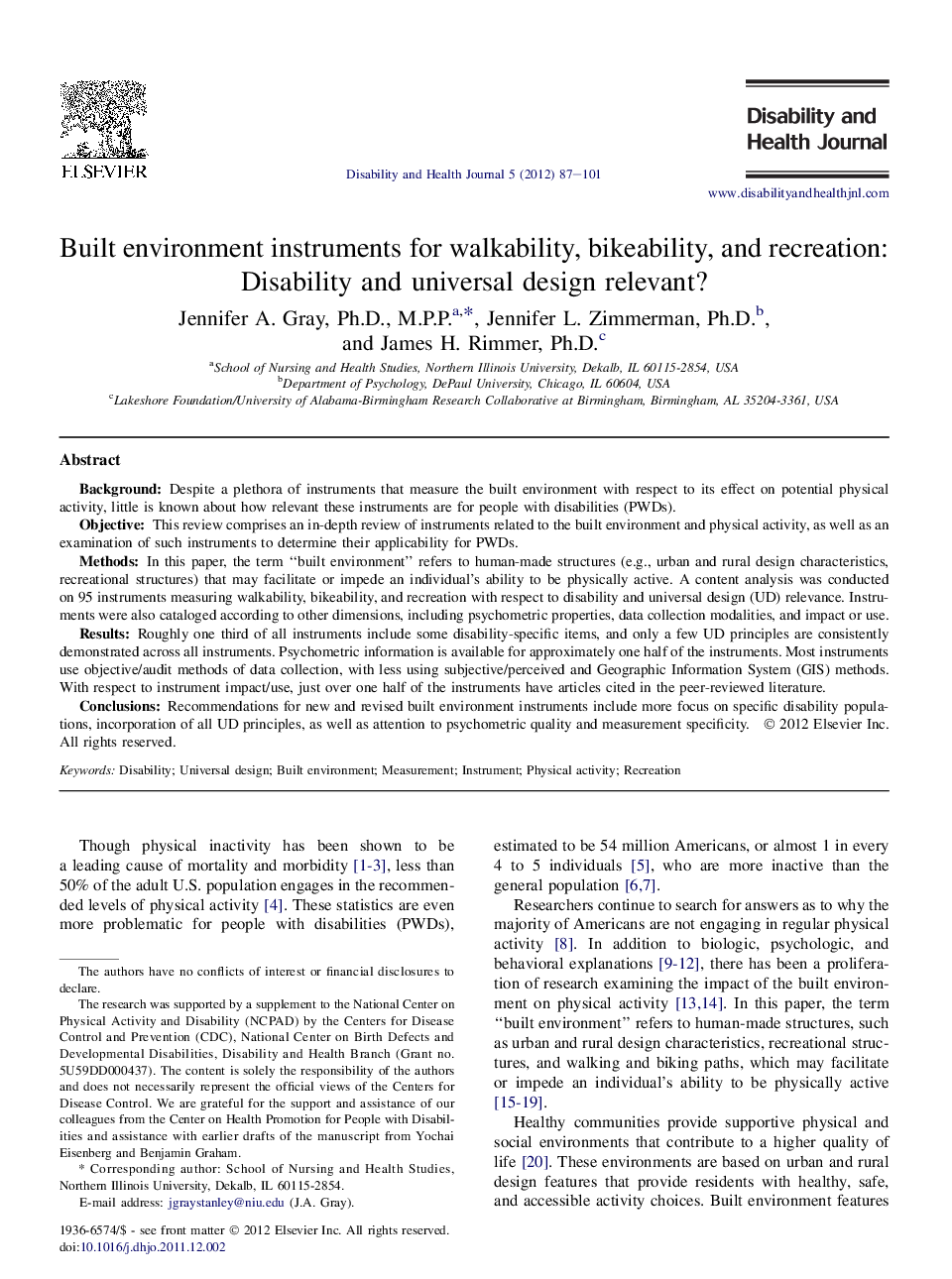| Article ID | Journal | Published Year | Pages | File Type |
|---|---|---|---|---|
| 4197600 | Disability and Health Journal | 2012 | 15 Pages |
BackgroundDespite a plethora of instruments that measure the built environment with respect to its effect on potential physical activity, little is known about how relevant these instruments are for people with disabilities (PWDs).ObjectiveThis review comprises an in-depth review of instruments related to the built environment and physical activity, as well as an examination of such instruments to determine their applicability for PWDs.MethodsIn this paper, the term “built environment” refers to human-made structures (e.g., urban and rural design characteristics, recreational structures) that may facilitate or impede an individual’s ability to be physically active. A content analysis was conducted on 95 instruments measuring walkability, bikeability, and recreation with respect to disability and universal design (UD) relevance. Instruments were also cataloged according to other dimensions, including psychometric properties, data collection modalities, and impact or use.ResultsRoughly one third of all instruments include some disability-specific items, and only a few UD principles are consistently demonstrated across all instruments. Psychometric information is available for approximately one half of the instruments. Most instruments use objective/audit methods of data collection, with less using subjective/perceived and Geographic Information System (GIS) methods. With respect to instrument impact/use, just over one half of the instruments have articles cited in the peer-reviewed literature.ConclusionsRecommendations for new and revised built environment instruments include more focus on specific disability populations, incorporation of all UD principles, as well as attention to psychometric quality and measurement specificity.
